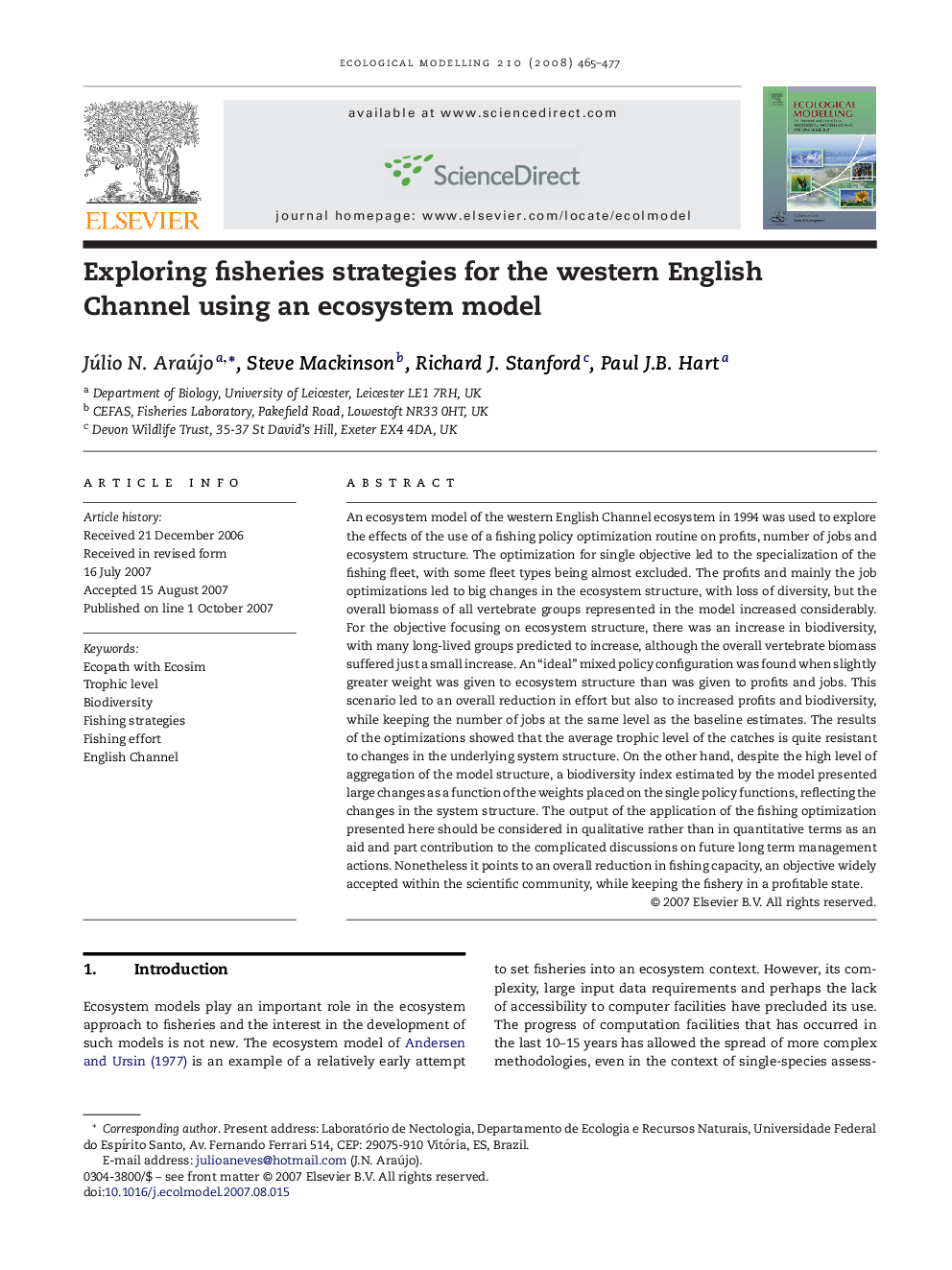| Article ID | Journal | Published Year | Pages | File Type |
|---|---|---|---|---|
| 4378233 | Ecological Modelling | 2008 | 13 Pages |
An ecosystem model of the western English Channel ecosystem in 1994 was used to explore the effects of the use of a fishing policy optimization routine on profits, number of jobs and ecosystem structure. The optimization for single objective led to the specialization of the fishing fleet, with some fleet types being almost excluded. The profits and mainly the job optimizations led to big changes in the ecosystem structure, with loss of diversity, but the overall biomass of all vertebrate groups represented in the model increased considerably. For the objective focusing on ecosystem structure, there was an increase in biodiversity, with many long-lived groups predicted to increase, although the overall vertebrate biomass suffered just a small increase. An “ideal” mixed policy configuration was found when slightly greater weight was given to ecosystem structure than was given to profits and jobs. This scenario led to an overall reduction in effort but also to increased profits and biodiversity, while keeping the number of jobs at the same level as the baseline estimates. The results of the optimizations showed that the average trophic level of the catches is quite resistant to changes in the underlying system structure. On the other hand, despite the high level of aggregation of the model structure, a biodiversity index estimated by the model presented large changes as a function of the weights placed on the single policy functions, reflecting the changes in the system structure. The output of the application of the fishing optimization presented here should be considered in qualitative rather than in quantitative terms as an aid and part contribution to the complicated discussions on future long term management actions. Nonetheless it points to an overall reduction in fishing capacity, an objective widely accepted within the scientific community, while keeping the fishery in a profitable state.
